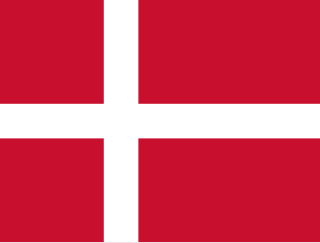At the 1908 Summer Olympics in London, nine wrestling events were contested, all for men. There were four weight classes in Greco-Roman wrestling and five weight classes in freestyle wrestling.

Argentina competed at the 1928 Summer Olympics in Amsterdam, Netherlands, the nation's fifth appearance out of eight editions of the Summer Olympic Games. Argentina sent its second national team, under the auspices of the Argentine Olympic Committee, 81 athletes that competed in 41 events in 12 sports. Argentina competed in equestrian, football, sailing, water polo, and wrestling for the first time. Argentina won 3 gold medals, its first Olympic championships in boxing and swimming. The team also won its first medals in fencing and football.
The men's team épée was one of four fencing events on the Fencing at the 1908 Summer Olympics programme. The event was won by the French team, who also swept the medals in the individual épée event. Each nation could enter a team of up to 8 fencers, with 4 fencers chosen for each match.
The men's team sabre was one of four fencing events on the Fencing at the 1908 Summer Olympics programme. The event was won by the Hungarian team, who also took the top two medals in the individual sabre event. Each nation could enter a team of up to 8 fencers, with 4 fencers chosen for each match.
The freestyle bantamweight was one of five freestyle wrestling weight classes contested on the Wrestling at the 1908 Summer Olympics programme. Like all other wrestling events, it was open only to men. The bantamweight was the lightest class, allowing wrestlers of up to 54 kilograms (119 lb). Each nation could enter up to 12 wrestlers.
The freestyle featherweight was one of five freestyle wrestling weight classes contested on the Wrestling at the 1908 Summer Olympics programme. Like all other wrestling events, it was open only to men. The featherweight was the second-lightest class, allowing wrestlers of up to 60.3 kilograms (133 lb). Each nation could enter up to 12 wrestlers.
The freestyle lightweight was one of five freestyle wrestling weight classes contested on the Wrestling at the 1908 Summer Olympics programme. Like all other wrestling events, it was open only to men. The lightweight was the median weight class, allowing wrestlers of up to 66.6 kilograms (147 lb). Each nation could enter up to 12 wrestlers.
The freestyle middleweight was one of five freestyle wrestling weight classes contested on the Wrestling at the 1908 Summer Olympics programme. Like all other wrestling events, it was open only to men. The middleweight was the second-heaviest weight class, allowing wrestlers of up to 73 kilograms (161 lb). Each nation could enter up to 12 wrestlers.
The freestyle heavyweight was one of five freestyle wrestling weight classes contested on the Wrestling at the 1908 Summer Olympics programme. Like all other wrestling events, it was open only to men. The heavyweight was the heaviest weight class, allowing wrestlers over 73 kilograms (161 lb). Eleven wrestlers competed; nine from Great Britain, one from Norway, and one from the United States. The competition was held on July 23, 1908. Each nation could enter up to 12 wrestlers.
The Greco-Roman lightweight was one of four Greco-Roman wrestling weight classes contested on the Wrestling at the 1908 Summer Olympics programme. Like all other wrestling events, it was open only to men. The lightweight was the lightest weight class, allowing wrestlers up to 66.6 kilograms (147 lb). Each nation could enter up to 12 wrestlers.
The Greco-Roman light heavyweight was one of four Greco-Roman wrestling weight classes contested on the Wrestling at the 1908 Summer Olympics programme. Like all other wrestling events, it was open only to men. The light heavyweight was the second-heaviest weight class, allowing wrestlers up to 93 kilograms (205 lb). Each nation could enter up to 12 wrestlers.
The Greco-Roman heavyweight was one of four Greco-Roman wrestling weight classes contested on the Wrestling at the 1908 Summer Olympics programme. Like all other wrestling events, it was open only to men. The heavyweight was the heaviest weight class, allowing wrestlers over 93 kilograms (205 lb). Each nation could enter up to 12 wrestlers.

Italy competed at the 1908 Summer Olympics in London, England. It was the third appearance of the European nation, which had not competed at the 1904 Summer Olympics. It was originally going to host the Games, but the eruption of Mount Vesuvius meant the UK hosted them.

Russian Empire (Russia) competed at the 1912 Summer Olympics in Stockholm, Sweden. 159 competitors took part in 62 events in 15 sports.

Finland competed at the 1920 Summer Olympics in Antwerp, Belgium for the first time as a fully independent state. It did compete at the previous Olympics, however, only as the Russian-dependent Grand Duchy of Finland. 63 competitors, 62 men and 1 woman, took part in 51 events in 9 sports.

Denmark competed at the 1920 Summer Olympics in Antwerp, Belgium. 154 competitors, 150 men and 4 women, took part in 66 events in 14 sports.

Denmark competed at the 1928 Summer Olympics in Amsterdam, Netherlands. 91 competitors took part in 55 events in 14 sports.

Athletes from Iceland first participated at the Olympic Games in 1908.
The men's Greco-Roman middleweight competition at the 1932 Summer Olympics in Los Angeles took place from 4 August to 7 August at the Grand Olympic Auditorium. Nations were limited to one competitor. This weight class was limited to wrestlers weighing up to 79kg.
The men's Greco-Roman middleweight competition at the 1964 Summer Olympics in Tokyo took place from 16 to 19 October at the Komazawa Gymnasium. Nations were limited to one competitor.






